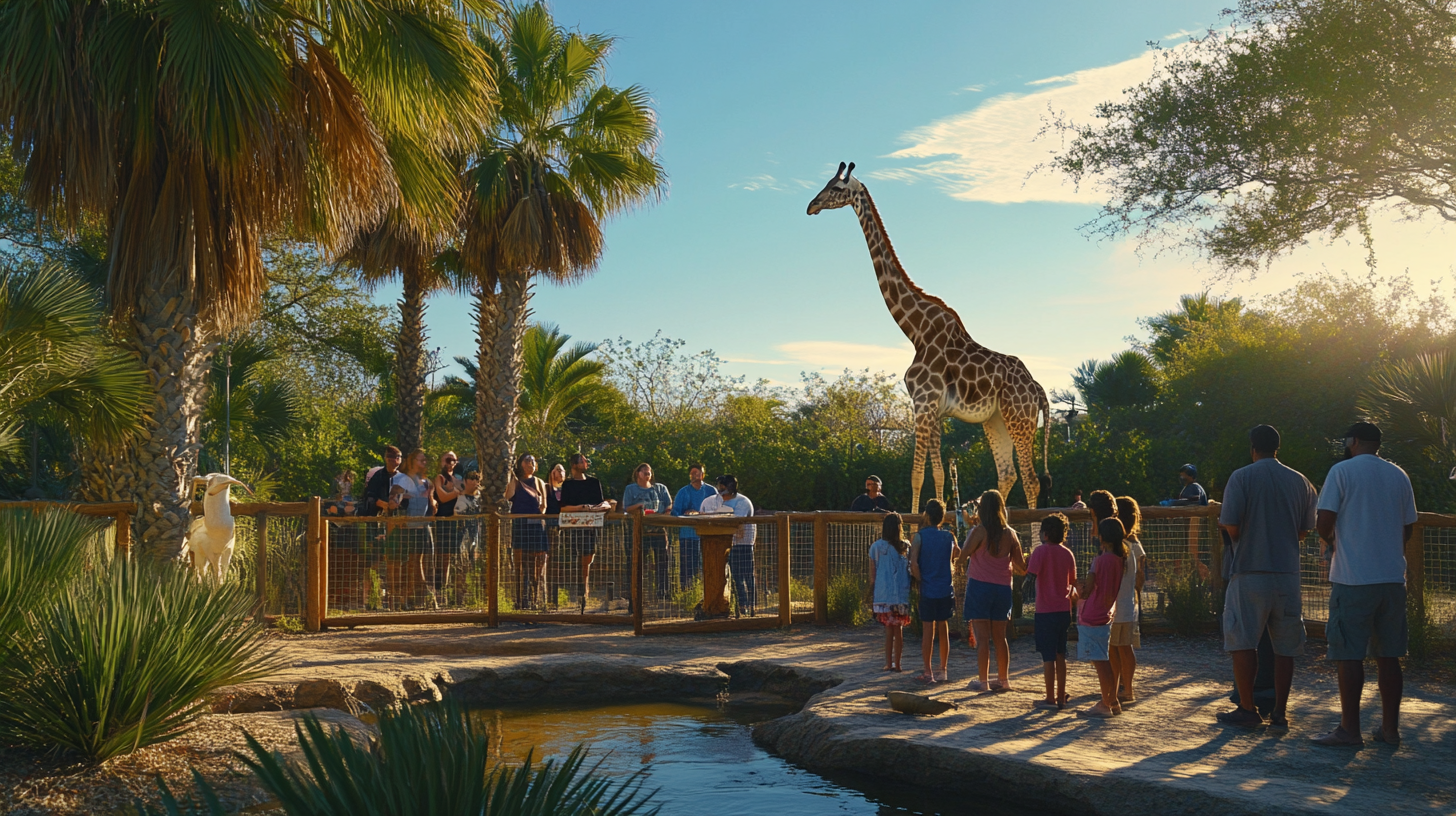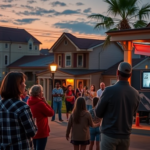Gladys Porter Zoo Makes Heart-Wrenching Decision to Euthanize Malcolm the Giraffe
The Gladys Porter Zoo in Brownsville has announced the difficult decision to humanely euthanize Malcolm, their tallest resident giraffe, following a severe leg injury that left him incapacitated. This decision was made after all efforts to aid Malcolm failed, culminating in an emotional conclusion to a beloved zoo chapter. This incident resonates deeply with the South Texas community, underscoring the challenges faced by animal care facilities in balancing humane treatment with operational realities.
A Closer Look at the Incident
Malcolm, standing at an impressive 17 feet tall, was one of the most majestic creatures housed at the Gladys Porter Zoo since his arrival in January 2025. On February 22, during routine night rounds, keepers discovered Malcolm unable to stand in the giraffe barn. Immediate attempts to help Malcolm regain his footing were unsuccessful, leading to further distress and exhaustion for the animal.
Director of Animal Health, Deborah Carboni, explained, “A necropsy revealed that Malcolm had suffered a ruptured ligament and a torn muscle at the left hip joint. This injury was likely sustained during a breeding attempt, when he lost his balance,” Carboni detailed. The injury’s severity rendered Malcolm unable to stand, and remaining down posed life-threatening circulatory risks.
Community Impact and Response
The Rio Grande Valley community, renowned for its strong ties to local wildlife and conservation efforts, has been considerably affected by the news of Malcolm’s passing. The zoo has long served as a vital source of education and entertainment for Valley residents, offering insights into animal behaviors and the importance of wildlife protection. The captivity and subsequent euthanasia of Malcolm serve as a poignant reminder of the intrinsic challenges that accompany the management of exotic animal populations.
Local resident and zoo member, Ana Rodriguez, shared her thoughts: “Malcolm brought so much joy to my family each time we visited the zoo. His presence was a testament to the wonders of nature we have the responsibility to protect. This loss hits home for so many of us in the community,” Rodriguez expressed.
Addressing the Risks and Challenges
The situation highlights the complexities that zoos face in maintaining animal health and welfare. While necessary, the decision to euthanize an animal due to quality of life considerations is never taken lightly. In Malcolm’s case, ensuring a humane and ethical approach was paramount for zoo officials.
Dr. Monica Santiago, an expert in wildlife conservation at the University of Texas Rio Grande Valley, emphasizes the need for continuous dialogue on zoo management. “While zoos play a crucial role in education and conservation, incidents like these point to an urgent need to advance our understanding of animal care, especially in mitigating risks during natural behaviors like breeding,” Santiago remarked.
Reflections on Future Conservation Efforts
Malcolm’s death has reinvigorated discussions on wildlife conservation efforts in South Texas. The incident draws parallels to broader issues concerning wildlife management and ethical considerations in zoo environments. Malcolm’s story can inspire sustained engagement with conservation initiatives locally and beyond, encouraging support for preventive measures and medical advancements in veterinary practices.
Additionally, Gladys Porter Zoo is committed to enhancing existing protocols to better serve their animal residents. “Moving forward, our team is dedicated to reviewing current procedures and striving for improvements that can prevent similar tragedies,” stated Derek Navarro, the zoo’s director.
Resources for the Community
In wake of the incident, Gladys Porter Zoo encourages community members to remain informed and involved through their educational programs and membership opportunities. These initiatives aim to foster a community-wide commitment to understanding and conserving wildlife.
The zoo has also opened channels for public feedback and inquiry regarding Malcolm’s passing and the zoo’s wildlife management practices. Residents can reach out through the zoo’s website or visit the zoo’s outreach events to discuss any concerns or questions they may have.
Ultimately, while the loss of Malcolm is a heartbreaking chapter for the Gladys Porter Zoo and its patrons, it presents an opportunity for the community to rally around the shared goal of promoting wildlife welfare and education. Malcolm may no longer grace the zoo’s grounds, but his legacy is likely to inspire ongoing efforts towards better care and appreciation of the natural world around us.







